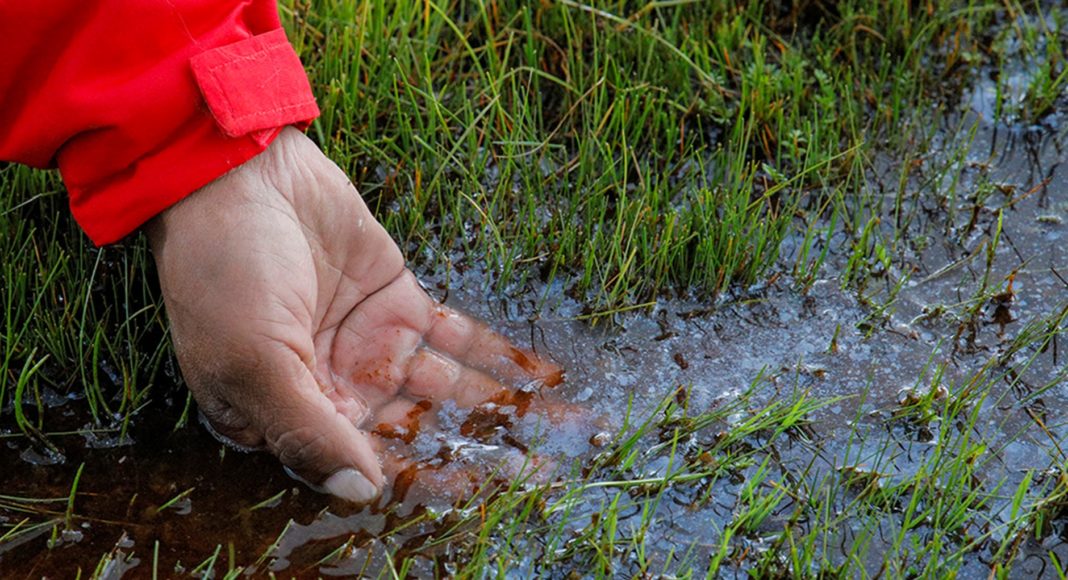This is the latest post in LAB’s London Mining Network blog, a partnership initiative between LAB and LMN. It contains a roundup of Latin America-related content from London Mining Network’s 27 May 2021 newsletter, with additional material supplied by LAB, researched and written by Kinga Harasim.
Main image: Contaminated river. Image: Miguel Gutierrez / DHSF
Peru: Glencore blamed for contaminating Espinar
In the province of Espinar in the Cusco region of Peru, Amnesty International and Human Rights Without Borders have been researching the affects of toxic metal pollution on human health.
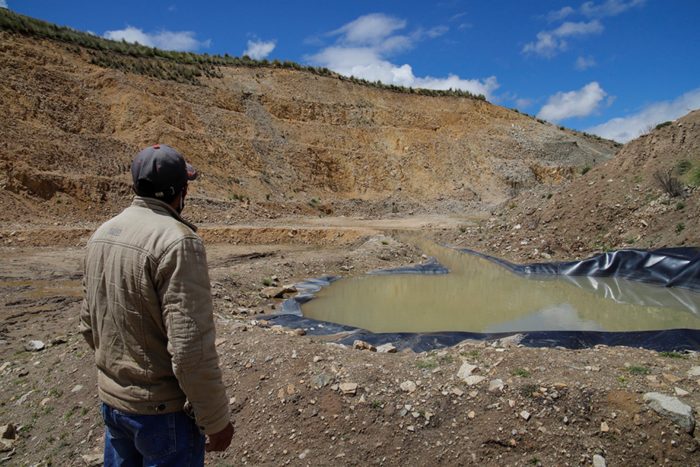
A survey of 150 individuals from 11 communities showed that 78 per cent of participants have elevated levels of toxic substances in their bodies, including lead (4 per cent), cadmium (12 per cent), arsenic (58 per cent), mercury (3 per cent), and manganese (29 per cent). Moreover, out of 191 samples of water tested in the area, 151 had measurable levels of pollutants, of which 115 came from water sources widely used for human consumption.
‘We are slowly dying, and the State turn their back on us’
For more than a decade, the communities of Espinar have been begging for an in-depth investigation to identify the cause of the widespread health problems that affect them. The Amnesty study interviewed 11 people whose cases are considered emblematic. All share similar conditions: neurological, respiratory, digestive, ocular, cardiovascular, renal, rheumatic, urinary and dental.
Although it has not yet been formally proven, local people point the finger at the environmental contamination caused by mining in the province. Some can remember how it was before the mining began. All 11 communes included in the study are located close to the Antapaccay project, the old Tintaya mine, once operated by a Peruvian company but now under the control of the Anglo-Swiss Glencore.
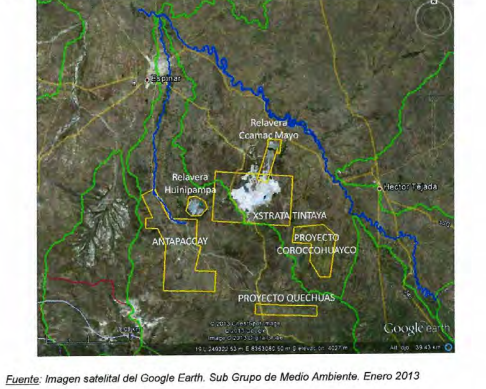
‘I want to know when the State is going to listen to us, we are slowly dying and the State does not listen, and turn the back on us’ – Gerson López from the Alto Huancané community of Espinar.
Moreover, the report showed that some communities lack drinking water and in some cases have access to the tap water only for three hours a day.
‘There are more than 600 boreholes, drilled as part of this project. Some of these have dried up our springs and wetlands. Due to these works [drilling] the quality of the water has been altered. Yet that is the water we consume’ – said Felipe Kana Chuctaya, the president of the Pacopata community.
‘The water we drink, smells, it looks dirty, but with a heavy heart we drink it and say – Dear God, pleased heal this water, bless it, so we can drink it’ –said Melchora Surco, a leader of one of the Espinar communities.
The resulting public health crisis has become much more severe since the outbreak of the Covid-19 pandemic. In Espinar there were 3,828 cases of covid infection by 3 May, with 27 deaths in the previous 10 days.
Contamination is a public health issue
A multisectoral commission was established, made up of 14 representatives of the communities and national and regional governmental institutions, to investigate the source of heavy metals in Espinar. However, the results of their investigation are still unknown.
‘They haven’t informed us about any progress. Initially, they said that they would send the first report in the fortnight of April, but the answer to the delay may be that they wanted to include the water studies’ – said Karem Luque, member of the Cusco Technical Board of Environmental and Human Health.
At the national level in turn, at the beginning of April, the government passed Law 31189, which classifies contamination as a public health issue. Moreover, the Ministry of Health was instructed to create a national registry of affected persons and to update health care protocols.
Karem Luque, coordinator of the Technical Board of Environmental and Human Health, believes that the new law still needs improvement as it does not consider people who are ‘exposed’ to heavy metals, as being ‘affected’, only those having a medical diagnosis. Nevertheless, it is a huge advance towards improving health services in Peru.
Chile: Did Anglo American contaminate Colina river?
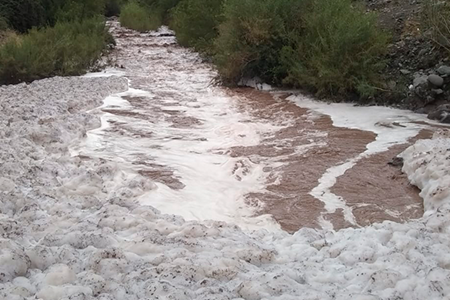
In Chile, at the end of January, communities of Colina together with the Investiga Colina NGO reported on social media the presence of a ‘strange foam’ in the Las Compuertas sector of the Colina River.
In response, the councillor for Colina, Andrés Vásquez, sent an team of environmental professionals to take samples of the water, which were later delivered to the ALS Global laboratory for analysis.
The mountaineer and doctor, Mauricio Purto, pointed out that the river may have been contaminated with tailings from the Los Bronces copper and molybdenum mine operated by Anglo American. ‘They can take samples and discover what lies behind this foam. But nothing will happen – Anglo American and its tailings have more power than the Chilean authorities’, – tweeted Mauricio.
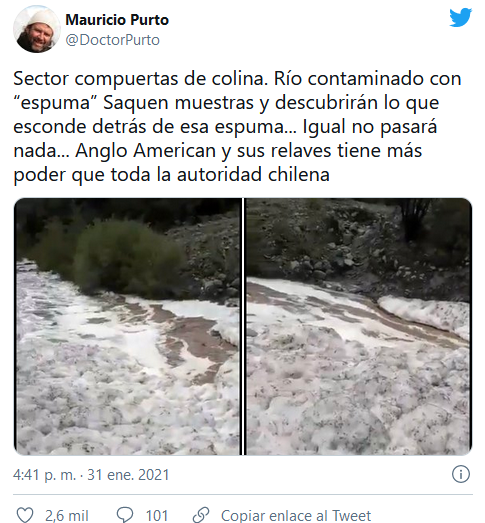
The ritual denial of responsibility
Following the allegationsAnglo American published a statement the next day (January 31) on social mediaclaiming to have conducted a study which showed that they have nothing to do with the contamination of the Colina River:
‘This phenomenon is natural, and it is about endogenous foams that are caused by the dragging of sediments from the bottom of the river and its subsequent aeration, product of the turbulence of the waters. (…) In addition, a team from the SDS certified laboratory took samples, the results of which rule out any anomaly in the composition of the water.’
The president of Investiga Colina, Eduardo Pérez Jofré, questioned the integrity of this study: ‘What caught our attention, was especially the speed with which the results were obtained.’ The mayor of Colina, Mario Olavarria, in turn, has supported the company in affirming that the strange foam in the river has not been a result of an operational incident.
Toxic heavy metals found in the water
Nevertheless, the results of the ALS study showed that water from the river has high levels of toxic heavy metals, such as aluminum, arsenic, cobalt, copper, iron, magnesium, nickel and vanadium. According to established norms, the maximum level of arsenic should be 0.1 milligrams per liter, whereas the river sample showed 0.25, 25 times above the level permitted in Chile. The standard for aluminum, in turn, sets a limit of 5 milligrams per liter wherease the sample showed 690mg.
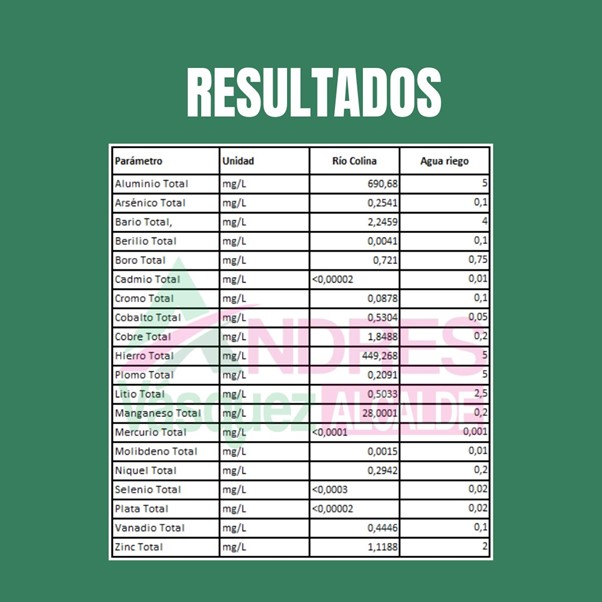
In a public statement, local NGOs expressed their concerns and called on government authorities to conduct environmental assessments and to respect the national constitution, which grants the right to live in a healthy environment and free of contamination. The last environmental impact study of the Las Bronces mine was conducted in July 2019.
‘We are concerned about the serious impacts on crops (whose products are sold at local fairs and throughout Santiago), on livestock and on the flora and fauna of the area whose ecosystems are being altered by heavy metals of this type.’
Then, in a further statement on 26 February, Anglo American admitted that, although preliminary samples showed the water’s PH level to be normal, the final results revealed very high arsenic levels reaching 0.147 mg / l at Estación Colina and 0.153 mg / l at Compuerta Vargas, whereas the safe limit is 0.10 mg / l. Nevertheless, they denied any link between mining operations and the increase in heavy metals in the Colina river.
‘We see with great concern how large-scale mining in this country seeks legal subterfuges to obtain water. In addition, they expose us to the risk of serious contamination contingencies due to pipeline ruptures, as have already occurred, which would definitely bury agriculture in the area.’ said David Ojeda, spokesman for the Quilapilún Valley Farmers Community who denounced the incident.
In other news…
Bolivia: More than 200 Miners from the Andacaba project of Pioneer Mining, in the department of Potosí, marched to the city of La Paz, to demand that the Government nationalize this company. For more than a year workers have not received their wages, and they claim that there is no plan of reactivation. The leader of the Departmental Workers’ Centre (COD) Heriberto Chavarría said that there was an attempt of a dialogue with the minister of mining, Ramiro Villavicencio. But, after hearing the company’s proposals, the workers were not satisfied.
Argentina: The Río Negro provincial government granted 10 new permits to Ivael Mining SA for exploration of gold and silver. This was done without respecting the right to free prior and informed consultation of Mapuche Tehuelche community, who inhabit this area. While the company tried to enter the territory, they found the gates locked. ‘We have decided to prohibit the entry of any mining company to our community territories. Free prior and informed consultation has not been respected and we understand that Indigenous law is above the mining code,’ they stated ––––in an official document.

